Potrebujeme váš súhlas na využitie jednotlivých dát, aby sa vám okrem iného mohli ukazovať informácie týkajúce sa vašich záujmov. Súhlas udelíte kliknutím na tlačidlo „OK“.
ASTM D4535-13e1
Standard Test Methods for Measurement of Thermal Expansion of Rock Using Dilatometer (Includes all amendments And changes 4/17/2018).
Automaticky preložený názov:
Štandardné skúšobné metódy pre meranie tepelnej rozťažnosti, rock pomocou dilatometru
NORMA vydaná dňa 1.11.2013
Informácie o norme:
Označenie normy: ASTM D4535-13e1
Poznámka: NEPLATNÁ
Dátum vydania normy: 1.11.2013
Kód tovaru: NS-27618
Počet strán: 7
Približná hmotnosť: 21 g (0.05 libier)
Krajina: Americká technická norma
Kategória: Technické normy ASTM
Kategórie - podobné normy:
Zemní práce. Hloubicí práce. Budování základů. Podzemní práce
Anotácia textu normy ASTM D4535-13e1 :
Keywords:
rock, thermal expansion/contraction, thermal strain, dilatometer, ICS Number Code 93.020 (Earth works. Excavations. Foundation construction. Underground works)
Doplňujúce informácie
| Significance and Use | ||||||||||||||
|
5.1 Information concerning the thermal expansion characteristics of rocks is important in the design of any underground excavation where the surrounding rock may be heated. Thermal strain causes thermal stresses which ultimately affect excavation stability. Examples of applications where rock thermal strain is important include: nuclear waste repositories, underground power stations, compressed air energy storage facilities, and geothermal energy facilities. 5.2 The coefficient of thermal expansion, α, of rock is known to vary as the temperature changes. These methods provide continuous thermal strain values as a function of temperature, and therefore provide information on how the coefficient of thermal expansion changes with temperature. 5.3 Rocks are also often anisotropic, thus displaying different thermal strains depending on the orientation of strain measurement. These methods allow for measuring strain in one direction only. If anisotropy is expected, specimens with different orientations should be prepared and tested. 1.1 These test methods cover the
laboratory measurement of the one-dimensional linear thermal
expansion of rocks using a dilatometer.
1.2 These test methods are applicable between temperatures of 25°C to 300°C. Both bench top and confined measurement techniques are presented. Test Method A is used for unconfined or bench top measurements and Test Method B is used for confined conditions. Rocks of varying moisture content can be tested. 1.3 For satisfactory results in conformance with these test methods, the principles governing the size, construction, and use of the apparatus described in these test methods should be followed. If the results are to be reported as having been obtained by either test method, then the pertinent requirements prescribed by that test method shall be met. 1.4 These test methods do not establish details of construction and procedures to cover all test situations that might offer difficulties to a person without technical knowledge concerning the theory of heat flow, temperature measurement, and general testing practices. Standardization of these test methods does not reduce the need for such technical knowledge. 1.5 All observed and calculated values shall conform to the guidelines for significant digits and rounding established in Practice D6026. 1.6 The procedures used to specify how data are collected/recorded or calculated, in this standard are regarded as the industry standard. In addition, they are representative of the significant digits that generally should be retained. The procedures used do not consider material variation, purpose for obtaining the data, special purpose studies, or any considerations for the user’s objectives; and it is common practice to increase or reduce significant digits of reported data to be commensurate with these considerations. It is beyond the scope of this standard to consider significant digits used in analytical methods for engineering design. 1.7 The values stated in SI units are to be regarded as the standard. The values given in parentheses are mathematical conversions to inch-pound units that are provided for information only and are not considered standard. 1.8 This standard does not purport to address all of the safety concerns, if any, associated with its use. It is the responsibility of the user of this standard to establish appropriate safety and health practices and determine the applicability of regulatory limitations prior to use. |
||||||||||||||
| 2. Referenced Documents | ||||||||||||||
|
Podobné normy:
Historická
1.11.2013
Historická
1.11.2013
Historická
1.1.2008
Historická
1.3.2014
Historická
1.7.2008
Historická
1.8.2012


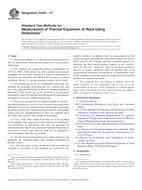
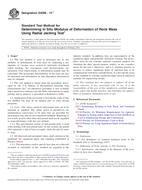 ASTM D4506-13e1
ASTM D4506-13e1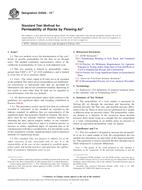 ASTM D4525-13e1
ASTM D4525-13e1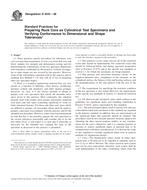 ASTM D4543-08
ASTM D4543-08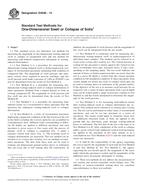 ASTM D4546-14
ASTM D4546-14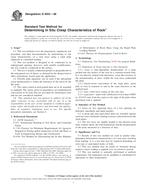 ASTM D4553-08
ASTM D4553-08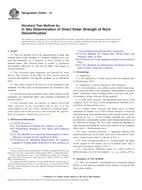 ASTM D4554-12
ASTM D4554-12
 Cookies
Cookies
